For millennia, the celestial beauty of the sky above has seduced and terrified humankind in equal measure. During much of this period, the nature of the cosmos was unknown, and it has only been in the last few hundred years - the blink of an evolutionary eye - that advancements in our understanding have made us privy to the workings of galaxies and life-cycles of extraterrestrial bodies.
For the first time, we find ourselves scientifically able to explain the world above; the blaze of a passing comet; the white of a nearby star; the swirling patchwork of a distant galaxy.
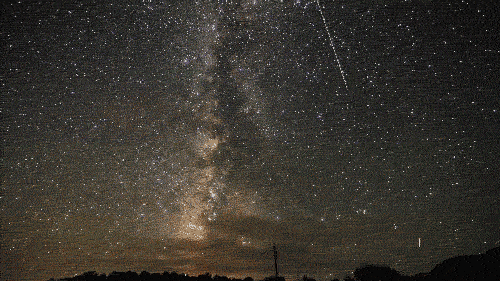
Let us look at three unique details of astronomical artwork: stars, gas clouds and the inimitable black hole.
Starry Starry Night...
Although interest in the colossal, incandescent bodies we call stars is usually piqued at night, the most well-known star, our Sun - the giant around which all the bodies in our solar system orbit - is, by definition, seen from Earth only during the day. The observant cloud-watcher will notice that the colour of the Sun changes with its position, from a deep-red (at sunrise and sunset) to a golden midday haze.
Photographs of the Sun taken from deep space, however, paint the star a constant orange-red hue.
What is causing this difference?
A View From Space
In the vacuum of deep space, visible light waves propagate unscattered by matter and, provided effects such as red shift are negligible, the colour of received light is true to that of light leaving the Sun.

The Sun in deep space
To explain the Sun's colour in space, we must think about the nature of light.
All bodies of non-zero temperature emit energy in the form of electromagnetic radiation. The most intense component wavelength of this radiation is determined by a body's surface temperature; this is why humans at approximately 310 K (Kelvin) emit energy in the form of infrared radiation ('heat') whereas spinning pulsars of temperatures 1,000,000 K or higher emit energy of the X-ray and gamma-ray wavelength.
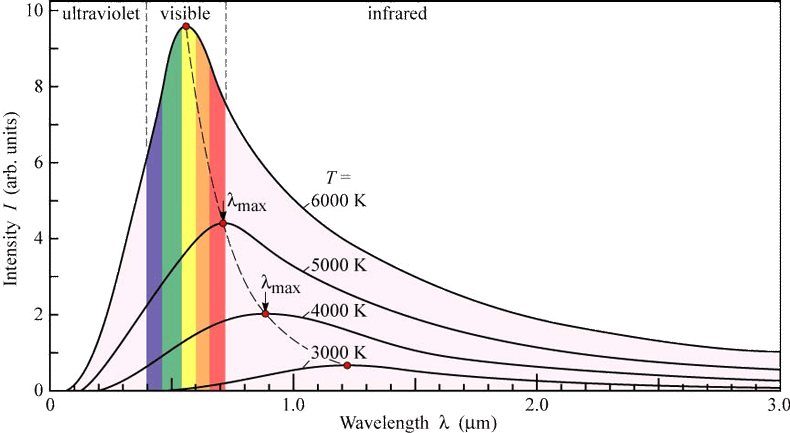
At 5,780 K, the Sun emits visible light of greatest intensity in the red/orange wavelength region, as the figure above indicates.
A View From Earth
Molecules in air oscillate along the direction of the electronic field of radiation, so incident light is scattered out by these vibrating, antennae-like molecules. Air molecules scatter light in the blue wavelength region at a greater rate than red light.
This means that light which has travelled greater distances through the atmosphere (eg. light incident to those watching the sun set) has a lesser blue component and appears 'redder'.
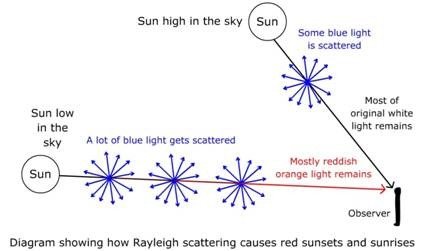

An alternative but equivalent approach to this colour contrast
Cloudy Celestial Colours
Having quickly exhausted the cosmic wonders of the naked eye, humanity turned to new technology, from the telescope to radiation-detecting imaging systems, to paint extraterrestrial bodies further afield.
One such body is the molecular cloud, a huge region of high-density matter comprising mostly hydrogen molecules, and the birthplace of stars.
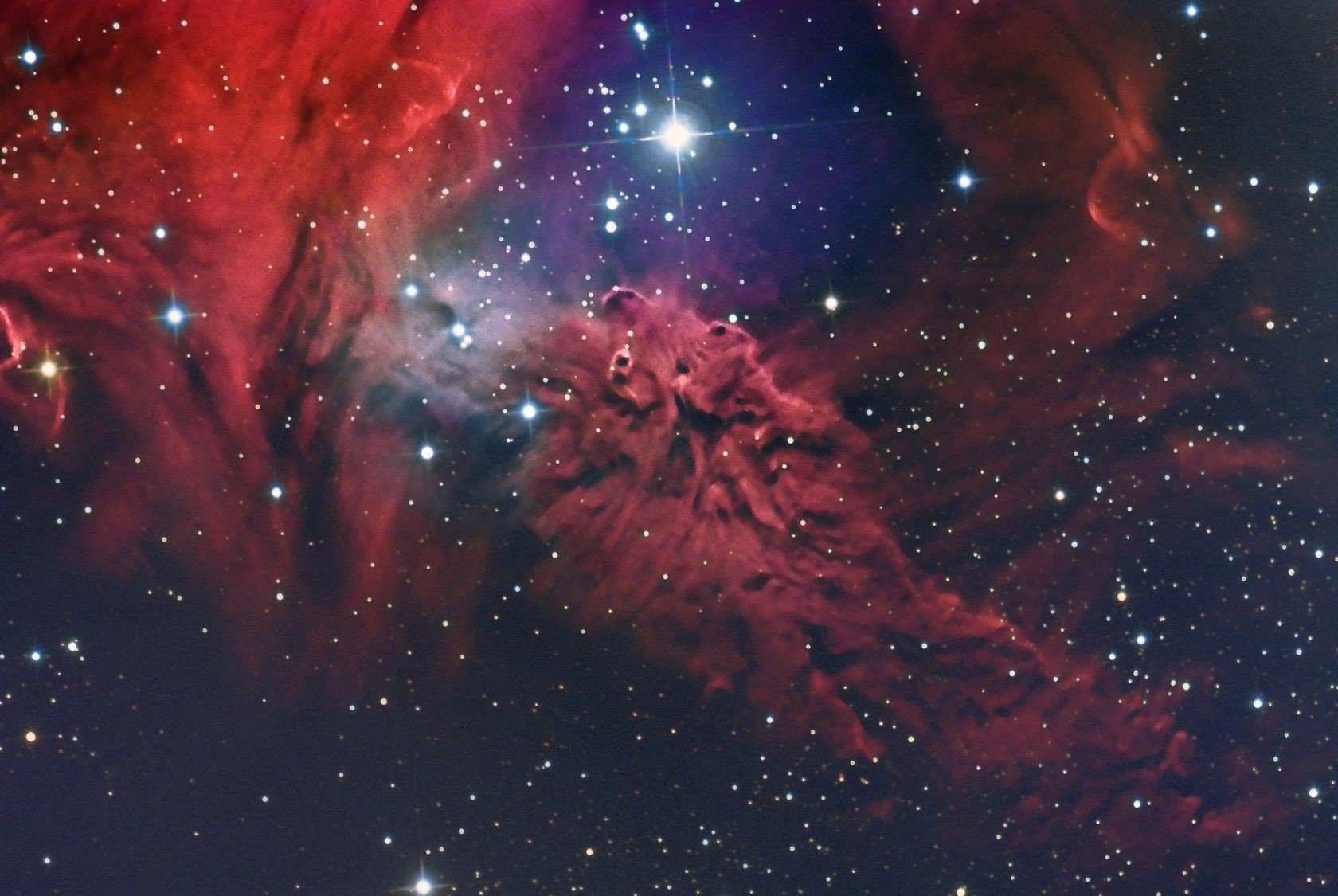
The vibrant colours of ionised hydrogen within a molecular cloud
The majority of molecular clouds comprise neutral (non-ionised) hydrogen molecules, which, due to molecular symmetry, exhibit only very faint spectral lines (the areas on the electromagnetic spectrum detected following energy emission of a given wavelength) - this makes neutral hydrogen clouds very difficult to detect by standard means.
Tracers present in the cloud, such as space dust, are excellent absorbers of background radiation and the 'silhouette' indicative of the elusive hydrogen cloud can sometimes be detected by modern telescopes.
So what is responsible for the vivid colours of other molecular clouds?
Ionised Hydrogen Clouds
While most molecular clouds contain neutral hydrogen molecules, some clouds - such as the one pictured above - contain significant amounts of ionised hydrogen. This ionised hydrogen may absorb radiation from neighbouring celestial systems and become 'excited' (enter a state of greater energy) before emitting energy during 'relaxation'. The energy emitted by the ionised hydrogen is equal to the energetic difference between the excited and relaxed states, and constant between two given states (in the case of hydrogen, the state/energy changes permitted are given by the Balmer series).
It follows that energy emitted during this state change is of a fixed wavelength of light on the electromagnetic spectrum - in this case, red.
Beauty In Absence
There is one infamous astronomical entity whose allure lies not in its appearance but its invisibility: the black hole.
Since the discovery of the first black hole in 1971, astronomers have sought methods to detect the undetectable - just how does one go about tracking down that which even energy cannot escape?
'Seeing' Black Holes
A black hole is so dense that even light cannot escape its gravitational pull.
Unlike our Sun and distant hydrogen clouds, we must resort to more imaginative ways to paint its picture.
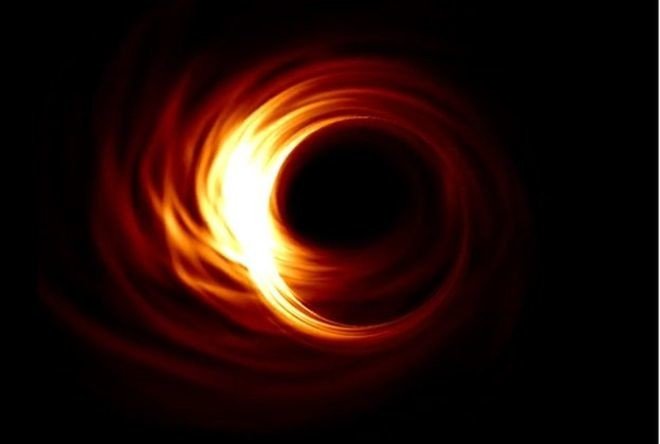
Mass Observations
Since black holes are incredibly massive (by definition, greater than three solar masses), the behaviour of nearby bodies can reveal their whereabouts. An unexplained precession, spinning or 'wobbling' in the orbit of a body may indicate that there is a black hole present nearby.
Unexplained mass is also notable. The galaxy NGC 4261, for example, houses at its core a rotating disk, roughly the size of our solar system, which has a calculated mass of 1,200,000,000 times that of our Sun.
Such a density suggests the presence of a black hole at the centre of the disk.
Gravity Lenses
Albert Einstein's Theory of Relativity precipitated the notion that gravity, and thus a black hole, could 'bend' space. Later scrutiny of 'before', 'during' and 'after' images of a solar eclipse showed a shift in position of background stars as light passing the Sun was bent by its gravity, confirming his prediction.
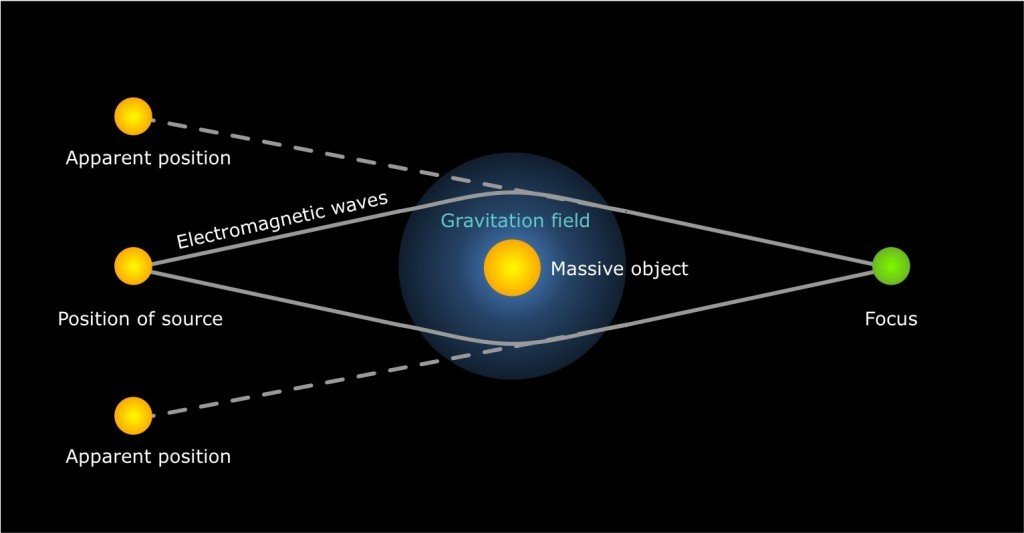
Regions of immense gravitational field 'bending' electromagnetic radiation
Since this discovery, it has been suggested - and experimentally shown - that immensely dense objects such as black holes can bend light from very distant stars into focus, much like a lens.
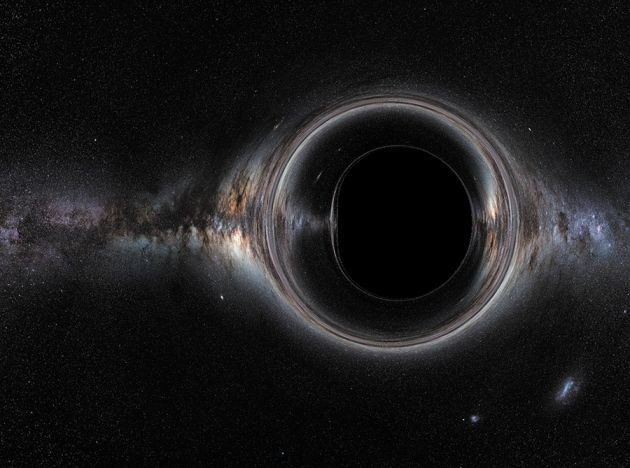
A digitally produced representation of the warping effect of a black hole's gravity upon nearby light and matter
Radiation Emission
The inescapable gravitational attraction of a black hole causes nearby bodies' orbits to accelerate inwards, superheating their matter. Accelerating superheated materials emit high-energy radiation such as X-rays which we can detect, and whose origins we can trace, here on Earth.
A Complete Picture?
These details represent only a fraction of the overall picture we have created on our mission to map the cosmos, and there is plenty of uninvestigated stellar real estate we have yet to discover - more blank canvas on which to expand our masterpiece!
If you enjoyed this article or are interested in all things science, follow my blog for daily doses of physics and chemistry, along with explanations for curious everyday phenomena.
References:
Encyclopedia Britannica
http://coolcosmos.ipac.caltech.edu
http://astronomy.swin.edu.au
University Physics with Modern Physics by Young and Freedman
http://spiff.rit.edu
http://science.howstuffworks.com
http://www.bbc.co.uk/news
The Night Sky
